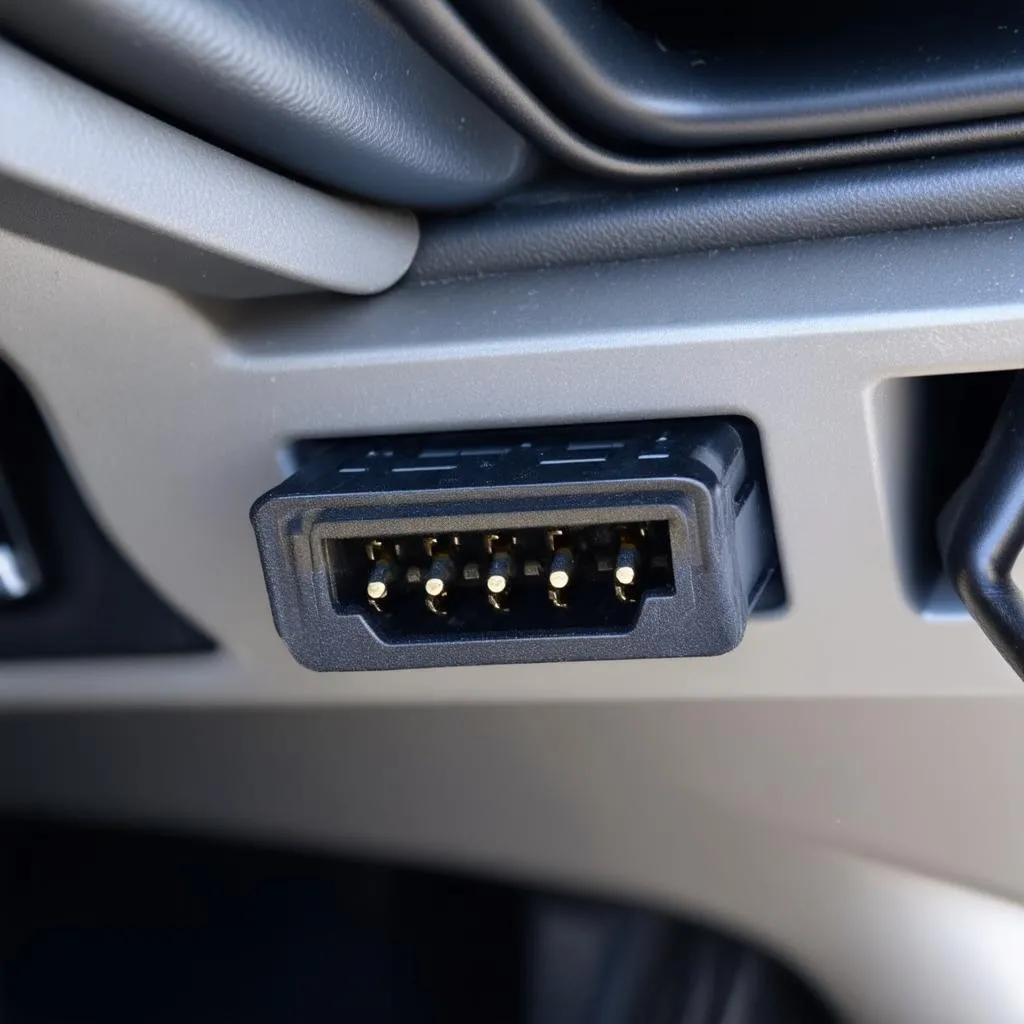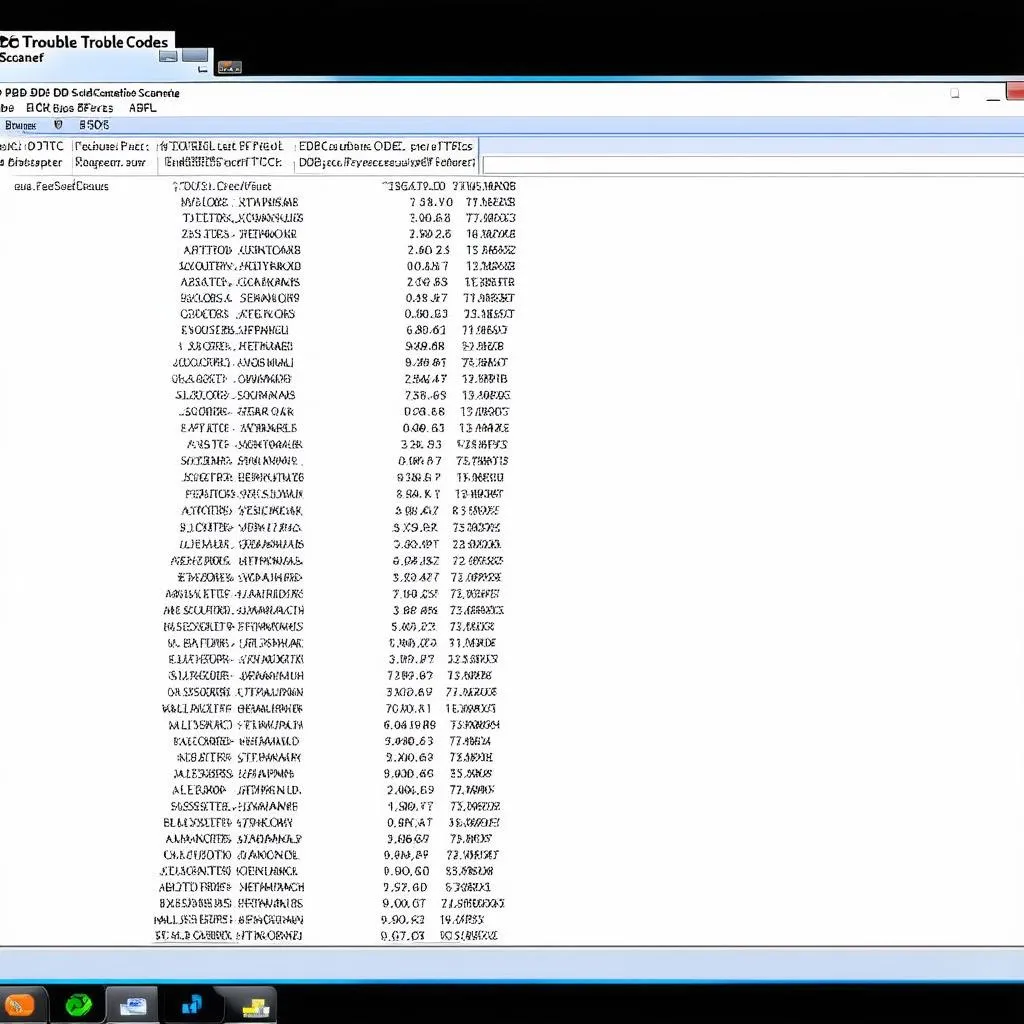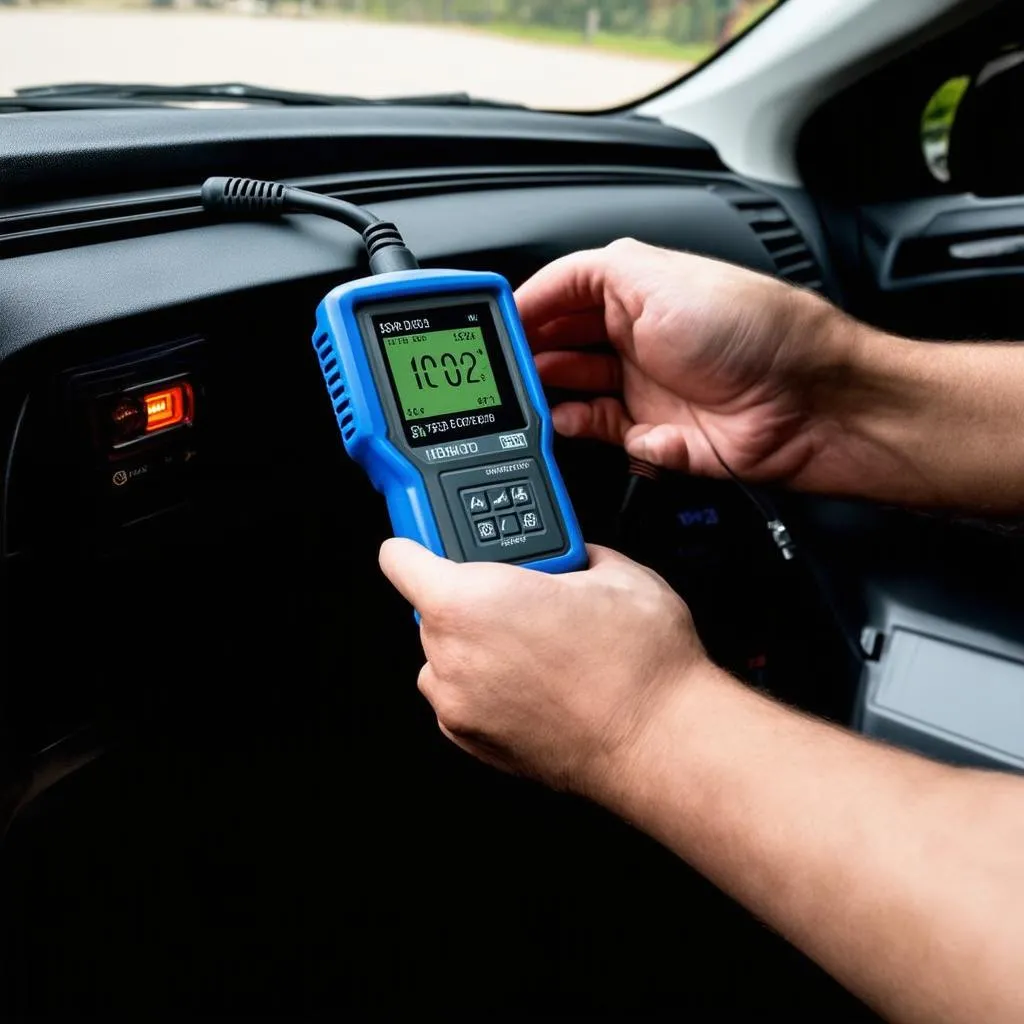“The engine light is on. Is it a sign of bad luck or just a simple fix?”
Have you ever experienced this situation? Many of us have. We’ve all been there, staring at that dreaded “check engine” light, wondering if it’s a minor inconvenience or a major problem. This is where OBD2 comes in, acting as the silent guardian of your vehicle’s health, communicating vital information to you and your mechanic. But how does OBD2 actually work? Let’s unravel the mysteries of this automotive technology.
Understanding the Importance of OBD2
The OBD2 standard, short for On-Board Diagnostics 2, is a standardized communication protocol between your car’s computer and a diagnostic tool, such as a code reader. It’s like a secret language your vehicle uses to tell you what’s going on under the hood. This standard has revolutionized automotive diagnostics by:
- Early Detection and Prevention: OBD2 provides real-time information about your vehicle’s performance, helping you detect potential issues before they become major problems.
- Empowering Vehicle Owners: It empowers you to understand your car’s health, make informed decisions about repairs, and even help you reduce emissions and save fuel.
- Simplifying Repairs: OBD2 diagnostic tools provide valuable insights to mechanics, enabling them to identify and fix problems efficiently.
Unraveling the Secrets of OBD2: A Deep Dive
How Does OBD2 Work?
Imagine your car as a complex system with a vast network of sensors. These sensors constantly monitor various aspects of your vehicle, including:
- Engine Speed: How fast the engine is running.
- Fuel Flow Rate: How much fuel is being injected into the engine.
- Oxygen Sensor Readings: How efficiently the engine is burning fuel.
- Transmission Temperature: How hot the transmission is getting.
This data is then transmitted to the Engine Control Unit (ECU), the car’s brain, which uses it to regulate engine functions and maintain optimal performance.
The OBD2 standard acts as a bridge between the ECU and a diagnostic tool, allowing technicians and even you to access this valuable data.
OBD2 Port: The Gateway to Vehicle Information
The OBD2 port is a 16-pin connector typically located under the dashboard, often near the steering column. This is the physical connection point where a diagnostic tool plugs in to communicate with the ECU.
 OBD2 port location
OBD2 port location
Diagnostic Trouble Codes (DTCs): The Vehicle’s Language
When your car detects a problem, the ECU stores a Diagnostic Trouble Code (DTC), a specific code that identifies the issue. These codes are like a secret language, providing information about the malfunctioning system and the nature of the problem.
 Diagnostic Trouble Codes
Diagnostic Trouble Codes
The Power of OBD2 Scanners
OBD2 scanners are tools designed to read and interpret these codes. They come in various forms, from simple code readers to advanced diagnostic tools with advanced capabilities. By connecting the scanner to the OBD2 port, you can retrieve DTCs, view real-time data streams, and even reset the “check engine” light.
 OBD2 scanner
OBD2 scanner
Understanding Common OBD2 Codes and Their Meanings
While OBD2 codes can seem daunting, they are actually a powerful tool for understanding your car’s health.
- P-Codes: Relate to powertrain problems, covering engine, transmission, and emissions systems.
- B-Codes: Relate to body systems, such as airbags, door locks, and windows.
- C-Codes: Relate to chassis systems, such as anti-lock brakes and traction control.
- U-Codes: Relate to network communication issues within the vehicle.
FAQs: Addressing Common Concerns
Q: How do I know if my car has OBD2?
- A: If your vehicle was manufactured after January 1, 1996, it’s required to have OBD2.
Q: Can I use an OBD2 scanner on any car?
- A: While the OBD2 port and communication standard are universal, some scanners are designed for specific car brands or models.
Q: What does “check engine” light actually mean?
- A: This light indicates a problem with your vehicle’s emissions system. It could be a minor issue or a serious one. It’s best to get it checked by a qualified mechanic.
Q: Can I clear my own “check engine” light?
- A: While you can clear the light using an OBD2 scanner, it’s important to address the underlying issue. Simply clearing the light without addressing the problem can lead to further damage.
Q: What is the “ready status” in OBD2?
- A: This refers to whether your vehicle’s systems have been operating long enough for accurate emissions testing. It needs to be “ready” before you can get your car inspected.
Maintaining Your Vehicle’s Health with OBD2
OBD2 can be a powerful tool for maintaining your vehicle’s health. By understanding the basics, you can be proactive in detecting potential issues, saving money on costly repairs, and ensuring your car runs smoothly.
Beyond the Basics: Exploring Advanced OBD2 Applications
OBD2 technology has evolved beyond basic diagnostics, opening doors to exciting possibilities:
- Real-Time Data Tracking: Track fuel consumption, engine performance, and even driving habits, providing valuable insights for improving efficiency and reducing emissions.
- Performance Tuning: Modify your vehicle’s performance by adjusting parameters like fuel injection timing and ignition timing, enhancing acceleration and fuel efficiency.
- Eco-Friendly Driving: OBD2 data can help you monitor your driving habits and identify areas where you can improve fuel efficiency and reduce your carbon footprint.
Stay Connected with TechCarUSA.com
For more information on OBD2, diagnostics, and automotive repair, explore other resources on TechCarUSA.com, including:
- 1999 Cadillac DeVille OBD Port Location
- Does a 91 Pontiac Grand Am Have OBD-II?
- 2007 Hyundai Elantra OBD Access
- Impreza OBD Port
- Global OBD-II with Toolpak Tech-2
Don’t hesitate to reach out if you need assistance or have any questions! We are here to help you understand the complexities of your vehicle and provide expert advice. Contact us via WhatsApp: +84767531508.
Embrace the power of OBD2 and take control of your car’s health! Share your thoughts and experiences in the comments below.